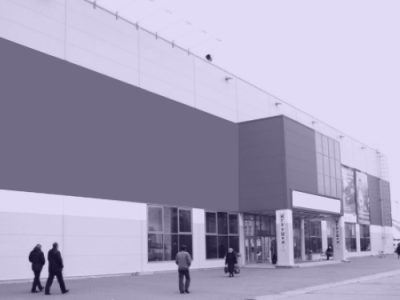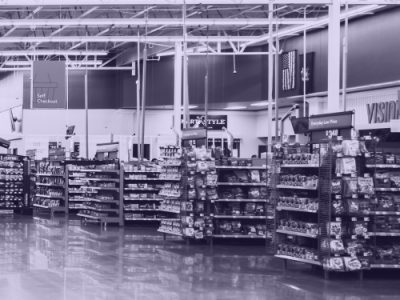Maximizing On-Shelf Availability (OSA)
Our Clients
Committing to the success of our clients around the world
Strategies and Future Trends
Shoppers still love to come to the store to quickly grab the products they need or to stroll along fully stocked shelves. However, the pandemic had a major impact on brick-and-mortar stores, including grocery stores. After two years of the pandemic, the damage can still be seen in on-shelf availability (OSA), foot traffic, and shopping patterns. This article focuses on the issues of on-shelf availability and how to improve it.
What is On-Shelf Availability (OSA)?
On-Shelf Availability (OSA), translated to Spanish as “disponibilidad de producto en el anaquel,” is a vital indicator for mass consumer companies. It measures whether a product is available on the shelf at the moment of purchase. This powerful tool analyzes each SKU, indicating if companies meet their ultimate goal: satisfying customers with the right product, at the right time, in the right quantities.
What Should Companies Measure: OSA, Out-of-Stock, or In-Stock?
Why is a Store Audit Important for Your POS?
 Reasons for Poor On-Shelf Availability
Reasons for Poor On-Shelf Availability
–
Stockouts or Breaks
Stockouts occur when products are entirely
depleted from shelves, often due to poor inventory management or unexpected high demand.
– Inaccurate Inventory
Ghost inventories, where products are listed in stock but are spoiled, damaged, or stolen, lead to discrepancies in actual shelf availability.
– Warehouse Retention
Products remaining in the warehouse instead of being moved to shelves can cause poor OSA. This often results from inefficiencies in replenishment processes.
– Poor Execution and Replenishment
Even with accurate forecasts and timely orders, poor execution can prevent products from reaching shelves, impacting OSA.
Impact of Out-of-Stock Situations

– Customer Dissatisfaction
Stockouts are frustrating for shoppers. Encountering empty shelves when looking for specific products damages the shopping experience and can permanently affect customer loyalty.
– Sales Loss
Out-of-stock situations lead to immediate sales losses. Customers may opt for substitute products, but many will leave without making a purchase, directly impacting revenue.
– Brand Loyalty
Some shoppers are loyal to specific brands and products. If they cannot find their preferred items, they may switch stores, leading to a loss in brand loyalty. Technologies Available to Measure OSA
Technologies Available to Measure OSA
 – Image Recognition Systems
– Image Recognition Systems
Image recognition technology provides real-time data on shelf stock levels and product placement. These systems analyze images of shelves to identify gaps and discrepancies.
– Data Analytics and AI
Advanced data analytics and AI can predict demand more accurately, manage inventory levels efficiently, and provide insights into purchasing patterns.
– RFID and Barcode Systems
RFID and barcode systems offer precise tracking of inventory levels, ensuring that products are always available on shelves.
Improving On-Shelf Availability
Case Studies
Successful OSA Management
Explore examples of retailers who have successfully managed on-shelf availability, leading to increased customer satisfaction and sales.
Lessons from Retail Failures
Analyze cases where poor OSA management led to customer dissatisfaction and lost sales, highlighting the importance of effective OSA strategies.
Future Trends in On-Shelf Availability
AI and Machine Learning
AI and machine learning are revolutionizing inventory management by providing more accurate demand forecasting and real-time stock monitoring.
Big Data and Predictive Analytics
The use of big data and predictive analytics allows retailers to make informed decisions about stock levels, reducing the risk of stockouts.
Advances in Supply Chain Technology
Emerging technologies in supply chain management, such as blockchain and IoT, are improving transparency and efficiency, enhancing OSA.
Sustainability and Ethical Considerations
Retailers are increasingly focusing on sustainable and ethical practices, which include ensuring OSA without overstocking and reducing waste.
Expert Insights
Interviews with Retail Industry Experts
Gain insights from industry experts on best practices and innovative strategies for maintaining high on-shelf availability.
Best Practices and Recommendations
Learn about proven methods and recommendations from experts to optimize OSA in your retail operations.
The Future of On-Shelf Availability in Retail
Recap the importance of on-shelf availability, the impact of stockouts, and strategies for improvement.
Discuss the future trends and technologies that will shape OSA management in the retail industry.
Encourage retailers to adopt advanced technologies and best practices to improve OSA, enhance customer satisfaction, and boost sales.
Success Stories
 Allis
Allis
 Coca Cola
Coca Cola
 Perfetti Van Melle
Perfetti Van Melle
 Nestle
Nestle
 Danone
Danone
 Mars
Mars
 Tarweej
Tarweej
 TOP 3 Retail Chain
TOP 3 Retail Chain
 Global Retail Corporation
Global Retail Corporation
 World’s Leading Manufacturer
World’s Leading Manufacturer
 Global FMCG Brand
Global FMCG Brand
 Leading Food Manufacturer
Leading Food Manufacturer
 Global Food Manufacturer
Global Food Manufacturer
 Global Coffee Manufacturer
Global Coffee Manufacturer
 Major Spirits Producer
Major Spirits Producer
 Global Pharmaceutical Brand
Global Pharmaceutical Brand
 Leading Food Manufacturer
Leading Food Manufacturer
 Global FMCG Brand
Global FMCG Brand
 Leading Food Manufacturer
Leading Food Manufacturer
 Leading Spirits Producer
Leading Spirits Producer
 Major FMCG Brand
Major FMCG Brand
 Major Coffee & Tea Manufacturer
Major Coffee & Tea Manufacturer



















